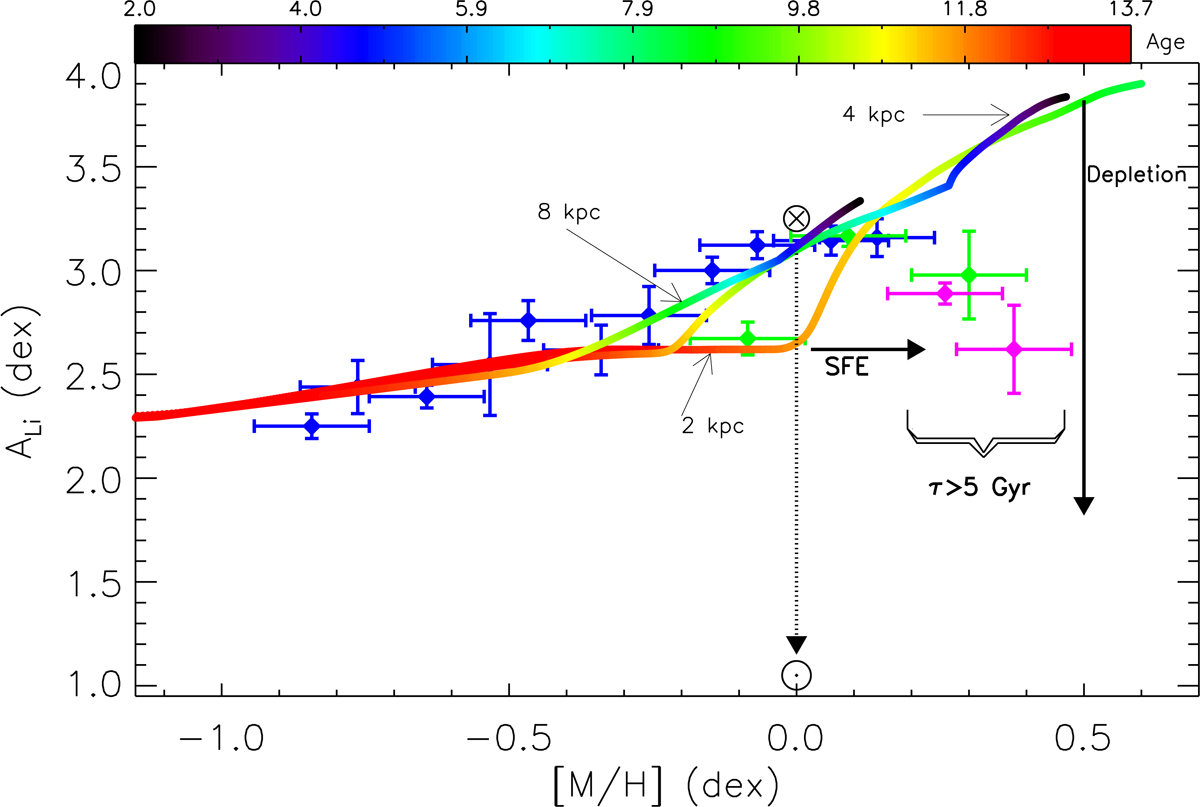Fig. 2.

Lithium abundance vs. metallicity for the thin-disk (blue dots), a metal-rich α-rich population (green dots) and a super-metal-rich solar-α population (pink dots) characterized in Fig. 1. We show a Galactic chemical evolution model of the thin disk (Chiappini 2009), for three different galactocentric bins of 2 kpc width (centered at 2, 4, and 8 kpc), color-coded by age. First, inside-out chemical evolution models predict the knee of the lithium tracks to occur at higher metallicities for the innermost zones because star formation is more efficient (illustrated by the horizontal thick arrow). Second, the internal depletion of lithiun in the Sun is illustrated by the vertical dashed arrow, from the meteoric abundance to the photospheric one. Third, current data suggest super-metal rich stars to be older than ∼5 Gyr, which implies a further lithium decrease due to depletion. These old ages can be understood in the context of radial migration. However, because there is no lithium depletion model at super-solar metallicities, we have assumed this depletion to be equal to the solar one (vertical thick arrow).
Current usage metrics show cumulative count of Article Views (full-text article views including HTML views, PDF and ePub downloads, according to the available data) and Abstracts Views on Vision4Press platform.
Data correspond to usage on the plateform after 2015. The current usage metrics is available 48-96 hours after online publication and is updated daily on week days.
Initial download of the metrics may take a while.


